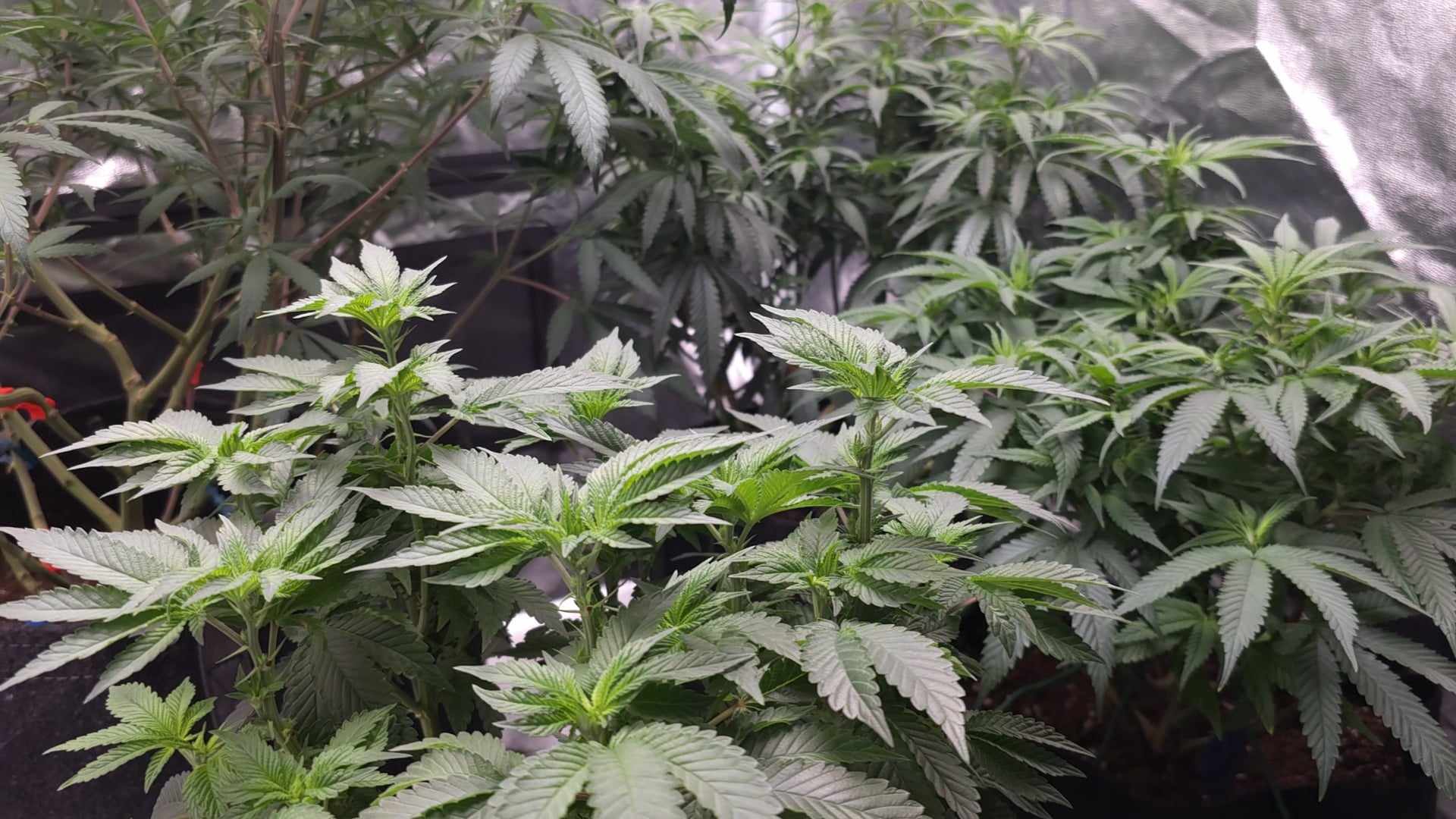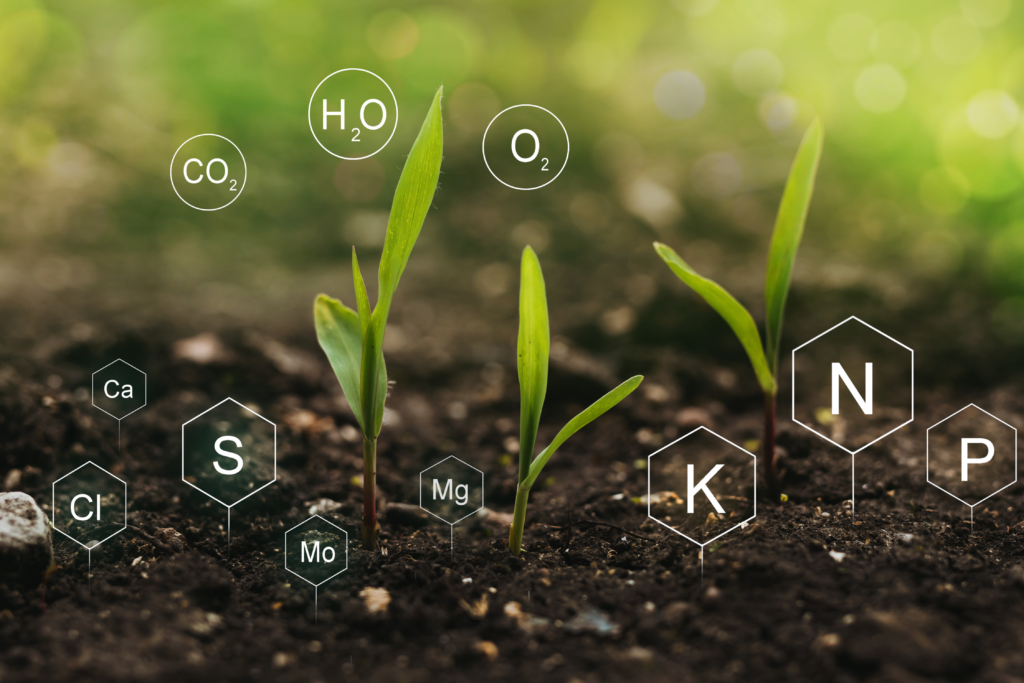
The veg or vegetative stage is considered (by most) the 3rd stage following the germination and seedling stages; and is arguably the most important stage but also the easiest to screw up when you don’t understand the basics. The next 4+ weeks in veg (varies by strain); are going to be detrimental to your plant’s fruit yields come time to flower.
The vegetative stage ends when the plant has started flowering. This means that if you’re growing autos you need to pay a bit more attention to your goods; or you might miss out on some BIG gains! In this article, I’m going over things to know about this stage for strong and healthy plants; for their entire life cycle. If you want to grow marijuana for medical or recreational purposes, you need to know the basics.

Caring for Your Weed Plants During the Vegetative Stage
Plant care is about as important as self-care in the vegetative stage. Here are some tips on what you should do during this period:
Watering
This should go without saying but water is pretty much the most important part of taking care of anything living; especially plants. Water controls how alive the microbiology of the media is (soil, coco coir, perlite, etc.). If you’re using hydro methods for growing; then water is going to be a bit important because that’s where all of your nutrients are going to be.
The best type of water to use should always be dechlorinated (no chlorine or chloramines) and it should always be near pH perfect; the pH controls your plant’s nutrient uptake (how it eats to grow). The best pH range for most media like soil/coco is 6.2 to 6.8 and for hydro is 5.8 to 6.5. Always water enough daily to keep the roots hydrated but not enough to drown them (yes plants can drown); you can check the moisture by sticking your finger in the media down to the second knuckle. Water if dry, what I like to do is wait until my plant has about 3 nodes, and I water with 1/2 a red solo cup (8oz) every couple of days; or as I need to (still checking every day).
NOTE: at this stage, my plant is already in its permanent home (3gal pot^) so I know there is enough room for root growth and the 8oz of water won’t compact the media, suffocating/drowning the plant.
This is a good way to measure the right amount of water to give your plant early on (in my opinion); and gradually increase from there as you see that your media is drying out faster. It’s recommended that you develop a schedule to stay on top of watering and feeding, but some people like to wing it.

Lighting
Light is nearly as essential to cannabis plants as water, since it drives photosynthesis—the process by which plants produce food. The more light your plants receive, the faster and larger they will grow. There are various options available, both free and paid. You can use natural sunlight or artificial grow lights, depending on your preference and budget. While natural sunlight is the most cost-effective option, grow lights, such as LEDs, are ideal for situations with limited natural light.
The lighting cycle also plays a crucial role in controlling when your plants begin to flower and how tall they grow during the vegetative stage, as well as influencing the overall yield. For more detailed information on lighting and how to optimize it for cannabis cultivation, check back with us later. In the meantime, here’s a great article on Lighting Guide for Cannabis.
Temperature and Humidity
Humidity and temperature are vital aspects at this point as well, but can become a non-issue; as long as you have good enough air circulation and an exhaust fan to filter out hot air and pollutants. The relative humidity or RH should be between 50-60% humidity during this stage, any more than that (without proper airflow); leaving residual moisture in the air and even on leaves causing mold and pests like gnats to flourish.
Temperatures in a controlled environment should range between 70-78°F (21-25 °C); an oscillating fan should be in the tent to help prevent wind burn.
NOTE: The development of a plant in higher and lower temperature environments may vary by strain; some nutrients organic and synthetic have also been known to help plants thrive in adverse environments. For more information about advanced growing environments check out this article.

Nutrition
You need to give your plants increased nutrition during the vegetative stage, but it’s recommended to feed at 1/2 the suggested strength for new growers or exotic strains. You want to be sure that you have enough room for error when feeding your plant; like a child, your plant won’t eat everything on its plate, only what it wants. With that said feeding can cause a plant to grow full and sick with nutrient toxicity; alternatively if not fed enough the plant becomes deficient and could lose green pigment in its leaves, burn (browning on edges of leaves), or even die.
These effects usually take place when either the pH is perfect and you give them too much food (nutrient toxicity); or when you’re pH perfect and aren’t feeding them enough (nutrient deficient). Another possible issue that can come up (though more easily missed) is nutrient lockout; this is when a plant has its necessary food but the pH isn’t correct resulting in a lack of food movement from the media or nutrient tank to the roots.

Essential Nutrients During the Vegetative Stage of Cannabis Plant
One of the most important things you need to know is what nutrients your plant needs. Luckily, there are dozens of different nutrient brands and types out there used during the veg stage of cannabis. Let’s dig deep and analyze some of these nutrients.
Nitrogen
Some plants, like tomatoes and some grasses, naturally produce nitrogen in their leaves. Because of this, they do not need additional sources before the plant goes into its flowering stage. However, cannabis plants naturally do not create enough nitrogen by themselves. Because of this, you will need to add more as it grows into veg from seedling (3-4 nodes) to get those leafy greens that encourage photosynthesis.
This is meant to give your cannabis plant a strong foundation; and plenty of resources to produce energy before it starts flowering.
Note: that too much added nitrogen can hurt your plant causing leaves to look fluffy and dark green, so be cautious less is more!
Phosphorus
This nutrient stimulates root growth, increasing stem tissue health and preventing diseases. Furthermore, this nutrient in particular aids in photosynthesis as well as plant respiration which prevents energy loss. Another little-known fact is that it also increases turgor; a plant’s stress response to adverse conditions (temperature, training, etc.) this can increase the speed of recovery, adding vigorous growth.
Potassium
Potassium stimulates the production of sugars and starches for photosynthesis; increasing stem tissue health, root growth, and preventing diseases. Furthermore, this nutrient in particular aids in photosynthesis as well as plant respiration which prevents energy loss. Another little-known fact is that it also increases turgor; a plant’s stress response to adverse conditions (defoliation, training, etc.), and how the stomata in leaves open, this can increase the speed of recovery, adding vigorous growth.
Magnesium
This nutrient is mainly responsible for the strength and density of stems and branches. If you add too much magnesium, you will end up with weak stems that might snap or break under their weight (or the weight of your buds!).
Sulfur
This is yet another nutrient that aids with cell division (the process by which your plant creates new cells). This nutrient helps make your weed plants stronger and healthier. They are even said to be more pest-resistant when you add this nutrient in smaller doses.
The Importance of the Vegetative Stage
Remember, the vegetative stage is where your plants get their nutrients and use them to grow strong and healthy (and sometimes big). Without proper nutrition, your cannabis plant will not be as strong as it could – or should – be.
This is also the stage when numerous biological processes are taking place in preparation for the flowering stage. This is when the cannabis plant creates the newest material (such as leaves, branches, and roots).
Note that the weed plant requires enough sunlight, moisture, and nutrients during the vegetative stage. This ensures that the plant grows strong and healthy enough to survive when it enters the flowering stage.

Bottom Line
The vegetative stage is a foundational period for your cannabis plants, where they develop the strength and structure needed to support a bountiful harvest. As you’ve learned, this phase is all about maximizing growth through proper lighting, nutrients, and care. A robust vegetative stage sets the stage for a successful flowering phase, where the real magic happens.
Now that you’ve nurtured your plants through this crucial growth period, it’s time to shift your focus to the next exciting phase: the flowering stage. This is where your plants will begin to produce the buds you’ve been waiting for, and where your efforts in the vegetative stage truly pay off.
To ensure you’re fully prepared for this transition and to optimize your plants’ potential, check out our comprehensive guide on the Flower Stage. This resource will walk you through everything you need to know about flowering, from lighting adjustments to nutrient schedules. Don’t miss out on these crucial insights to help you achieve a successful and rewarding grow.
Additional Resources:
- Grow That Sh!t Better by Maximus Reigns – An essential eBook for both novice and experienced growers, offering advanced techniques and tips for improving cannabis cultivation.
- Cannabis Growers’ Handbook by Ed Rosenthal – A comprehensive guide that covers all aspects of growing cannabis, from setup to harvest.
- Royal Queen Seeds Blog – A rich resource for growers, featuring articles on growing techniques, strain information, and more.
- Need Cannabis Seeds? – Seedsman Seeds has a variety of seeds for all growers from new and seasoned to medical and CBD users.
- Grow Weed Easy – A website dedicated to providing step-by-step guides and resources for growing cannabis at home.
These resources offer valuable insights and practical advice, whether you’re just starting or looking to refine your cultivation practices. Dive into these materials to further enhance your understanding and skills in growing cannabis.